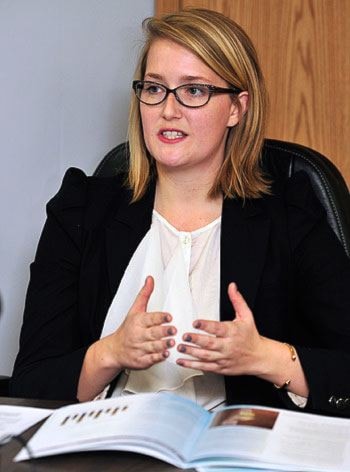The Yukon government’s new progress report on its climate change action plan shows little progress on several of the territory’s emissions targets.
Yukon does not appear to be on track to meet emissions reduction targets for Yukon government operations or for the government’s light fleet, nor does it seem to be making much headway with an attempt to reduce consumer electricity use.
However, the report sets out several new climate change adaptation measures, including new road construction methods to preserve permafrost.
Overall, Yukon’s greenhouse gas emissions have declined between 2011 and 2013, the most recent year for which data is available.
Oddly, total emissions for 2013 were not included in the report, which Kirsten Burrows, a senior analyst with the Yukon climate change secretariat, could not explain during a briefing on Thursday.
“There’s no specific reason as to why they haven’t been included,” she said. “I can’t speak as to why.”
But Environment Yukon later confirmed that 2013 emissions totalled 586 kilotonnes of carbon dioxide equivalent, down from 695 kilotonnes in 2011.
Emissions from the transportation sector also declined by 9.74 per cent between 2012 and 2013. That means the government’s goal of reducing transportation emissions by 10 per cent from 2012 levels by 2015 was almost met in a single year.
But those declines have little to do with government action, said John Streicker, a climate change scientist and a potential Liberal candidate in the 2016 territorial election.
“In reality, that reduction in emissions is due to changes in our resource industry.”
He argued that if a new mine opens and Yukon’s economy starts to grow again, emissions will pick right back up.
Yukon does not have a territory-wide emissions reduction target. But it does have a goal of reducing emissions from government operations to 20 per cent below 2010 levels by 2015. According to the report, however, preliminary data show that government emissions in 2013 were slightly higher than in 2010.
The government also has a target of reducing emissions from its light fleet by five per cent by 2015. As of 2014, those emissions had increased by three per cent.
However, Burrows pointed out that the increase in emissions is due to more kilometres being driven, and that the government is buying more fuel-efficient vehicles.
In 2014, Yukon Energy and ATCO Electric Yukon launched a program to reduce electricity consumption by offering LED lighting and energy-saving kits. The program was intended to help the territory reach its goal of reducing on-grid electricity use by five gigawatt-hours by 2016.
The report estimates that current programs will reduce consumption by just 1.1 gigawatt-hours.
However, it won’t be clear whether 2015 targets have been met until about 2017.
Burrows said it’s standard to have an 18-month time lag before emissions for any year can be accurately calculated.
And the report lists several specific initiatives that have been successful, including a reduction of 538 tonnes of emissions from energy audits and retrofits to government buildings. The new F. H. Collins school is also expected to use 28 per cent less energy than a comparable standard build.
The progress report also introduces a number of new measures that include installing energy efficient lighting in schools and launching a new ride-sharing program in Whitehorse in 2016.
Streicker said the government has done well with implementing measures to help the territory adapt to climate change, and in developing its own method for calculating emissions accurately. But he’s unimpressed by the attempts to reduce emissions.
“For dealing with the causes of climate change, no. There’s no progress here.”
Streicker admitted that the Yukon faces challenges in making substantial cuts to emissions, since the majority of the territory’s greenhouse gases come from transportation.
“Transportation is so tough. Say we bring in electric cars, and we get everybody onto electric cars. Well, you still have a lot of big truck traffic.”
But he said the government needs to be more ambitious. He said it would be difficult for the Yukon to set a territory-wide emissions target, because as soon as a new mine starts up, emissions would increase dramatically.
But he said the government should set a target that excludes the mining industry, and a separate emissions intensity target for the mines.
“I acknowledge that there are differences between here and other jurisdictions, but really you need to show some initiative.”
Contact Maura Forrest at
maura.forrest@yukon-news.com
